Abstract
1. Membrane slope resistance of Aplysia statocyst receptor cells was measured by passing constant current pulses, using a bridge circuit. In response to downward tilt all cells which responded exhibited depolarization but this could be accompanied by either decrease, increase or no measurable change in slope resistance, depending on resting membrane potential. 2. By altering membrane potential with d.c. and measuring slope resistance with constant current pulses, these cells are shown to exhibit both anomalous and delayed rectification. Either hyperpolarization or depolarization from one potential can cause the slope resistance to decrease by as much as a factor of 5. 3. The response to standard tilt can be changed from an increase in slope resistance to a decrease, or vice versa, by altering membrane potential. 4. When membrane potential was held constant during downward tilt, the slope resistance always decreased. 5. Slope resistance, the voltage response to standard tilts and the amplitude of membrane potential fluctuations all vary with average membrane potential in a similar manner. 6. These findings are incorporated into a circuit model in which anomalous and delayed rectification are represented by voltage-controlled elements. the response to tilt is always modelled as introducing a parallel conductance pathway with a large positive reversal potential. 7. The model demonstrates that slope resistance can be increased by adding a parallel shunt pathway if the latter brings the membrane out of the anomalous rectification region. 8. The model also demonstrates how delayed rectification can greatly alter the reversal potential inferred from measurements at potentials below actual reversal.
Full text
PDF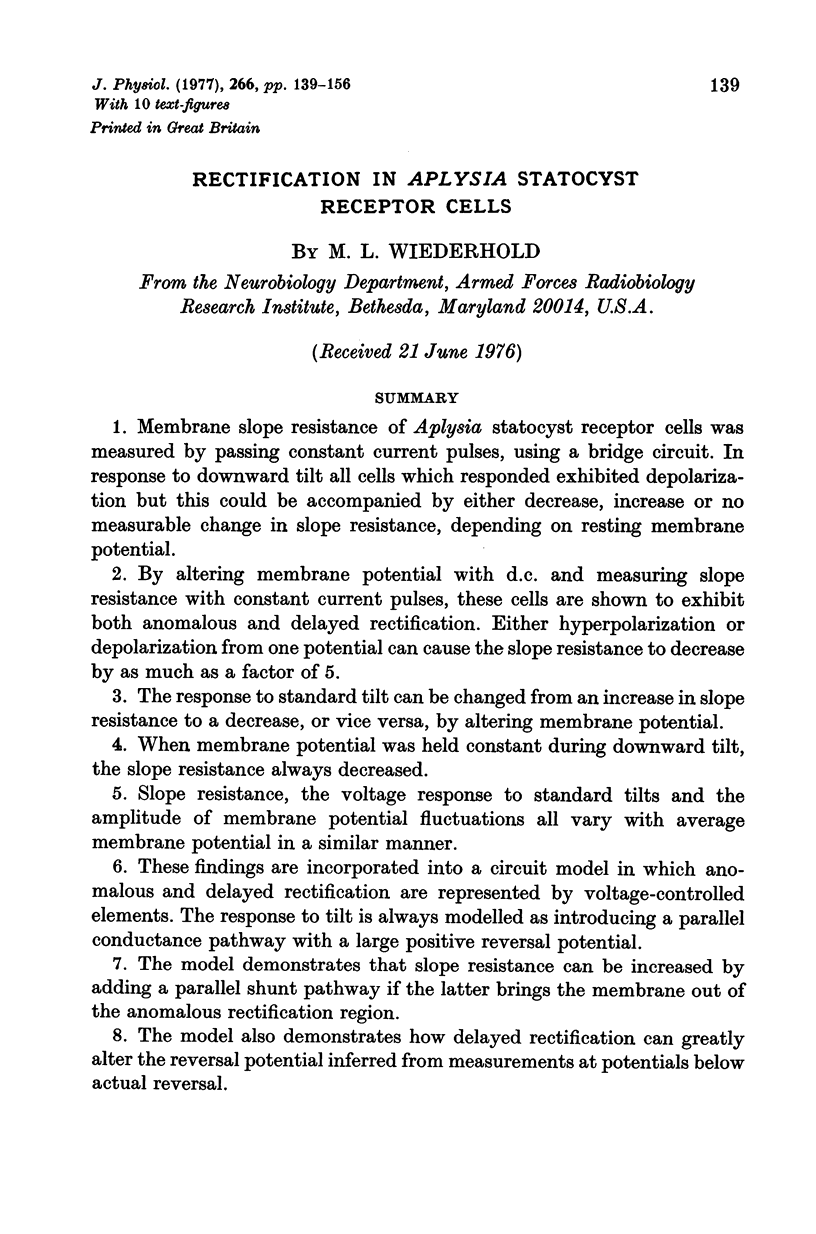
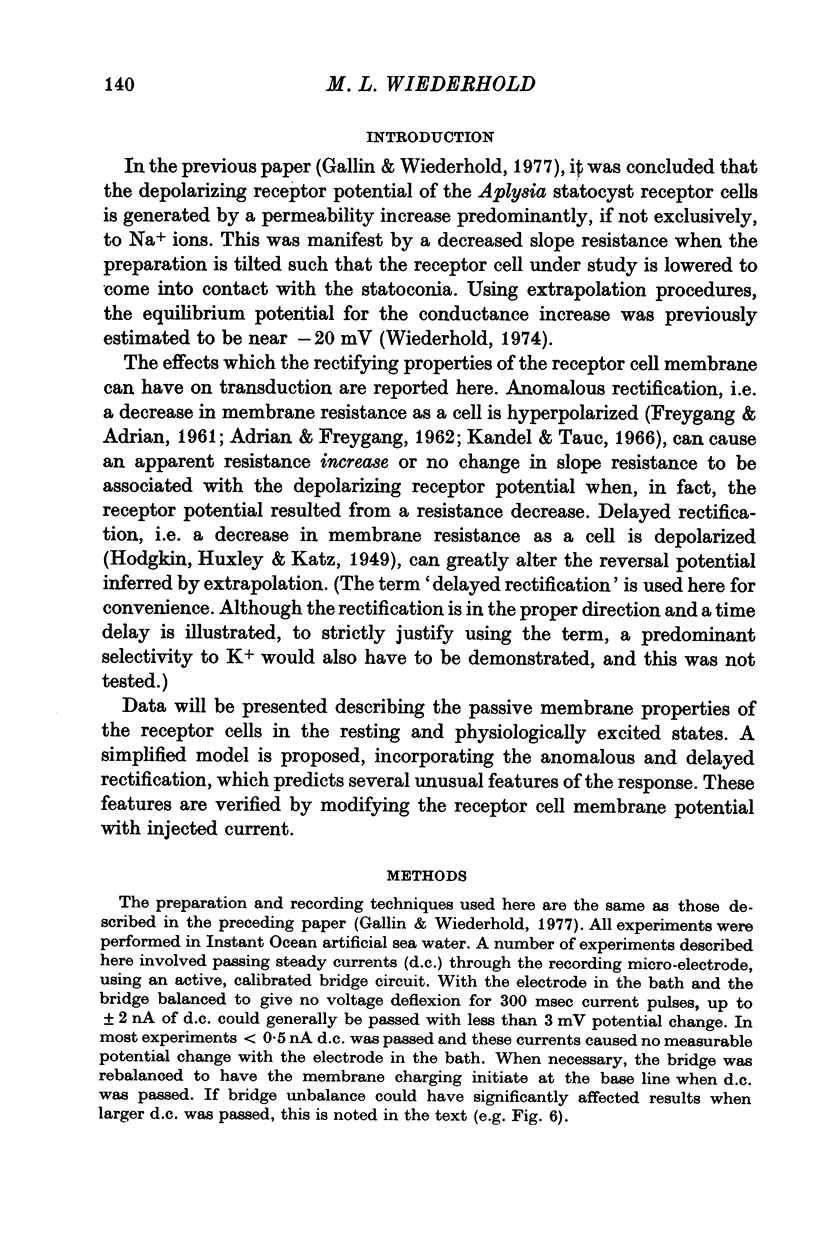
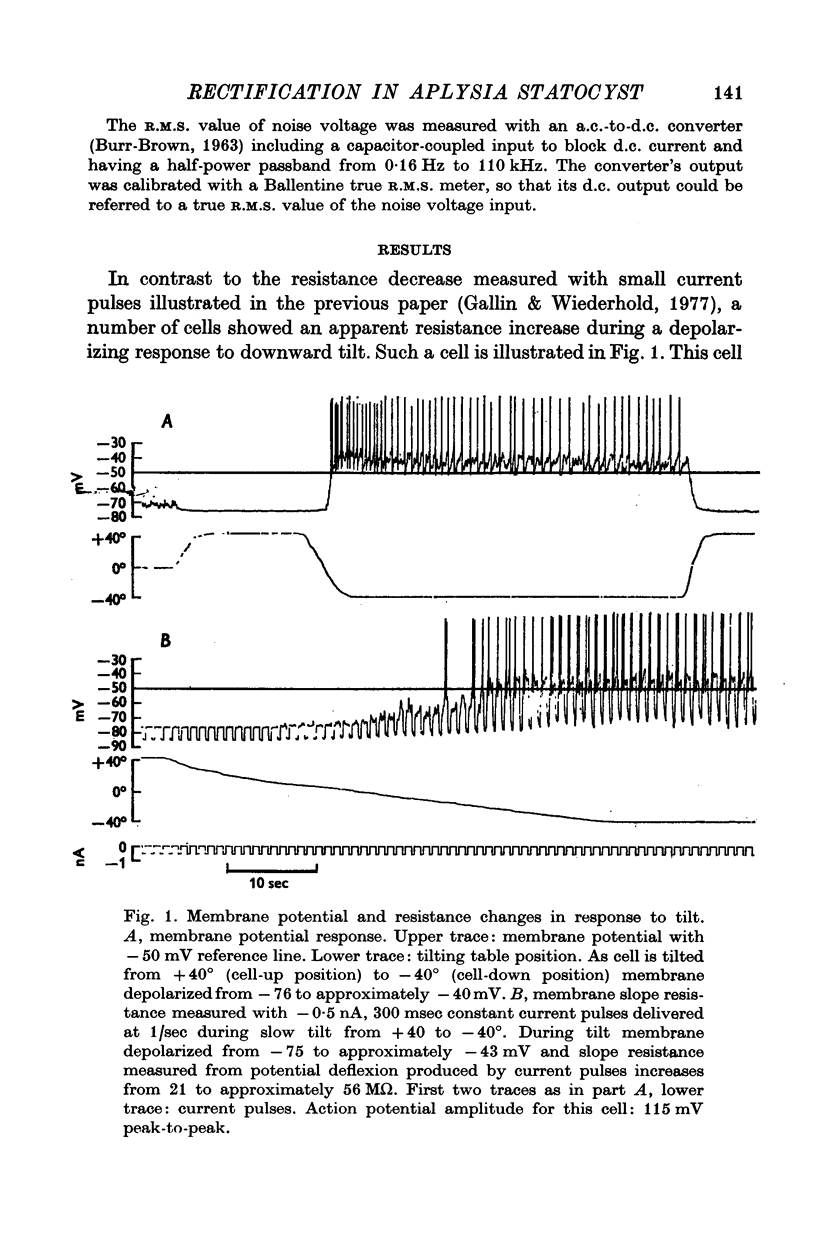
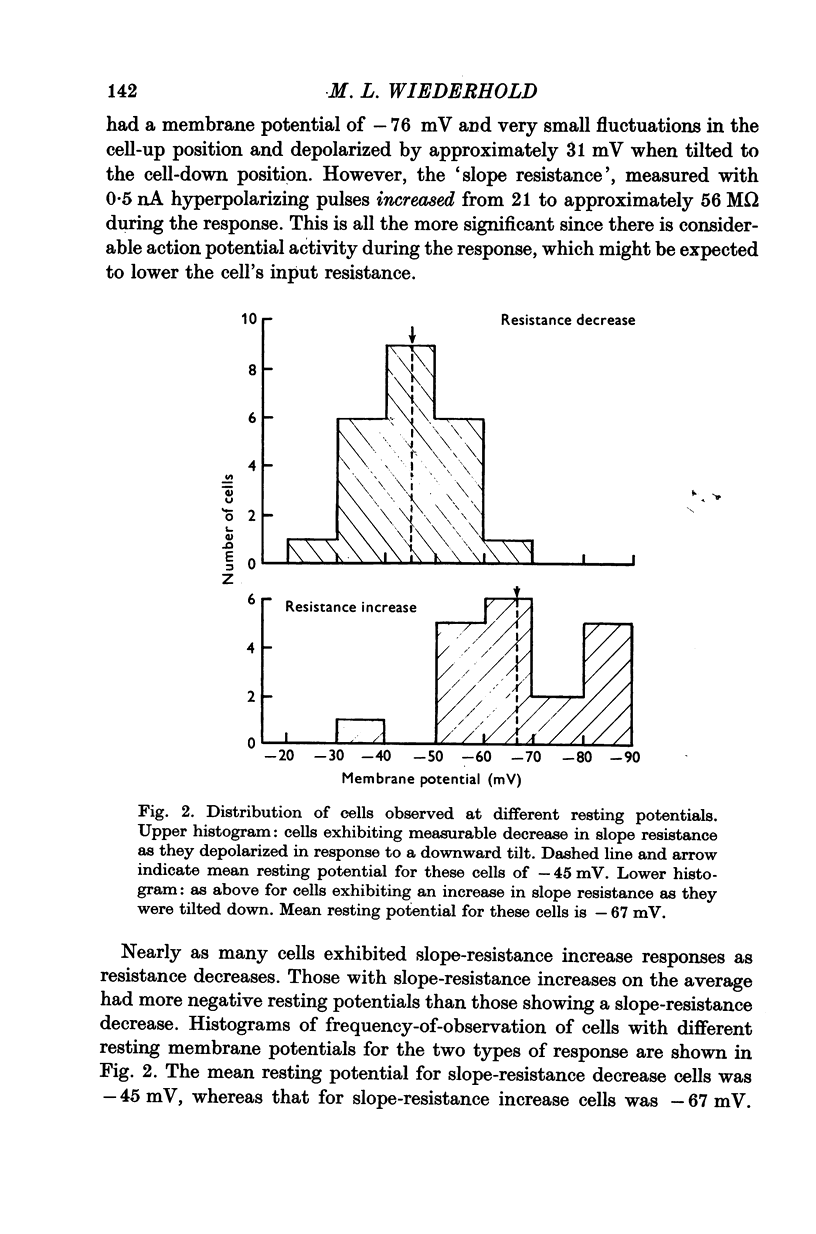
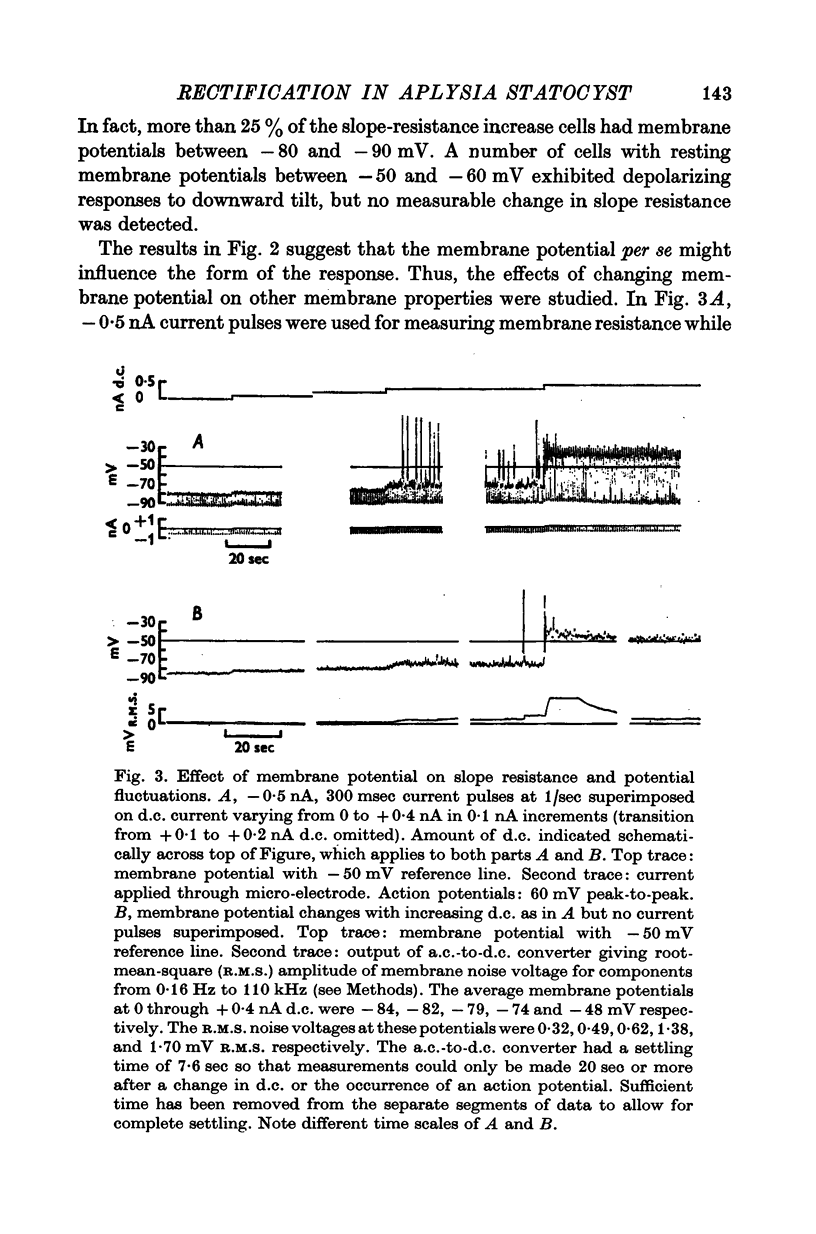
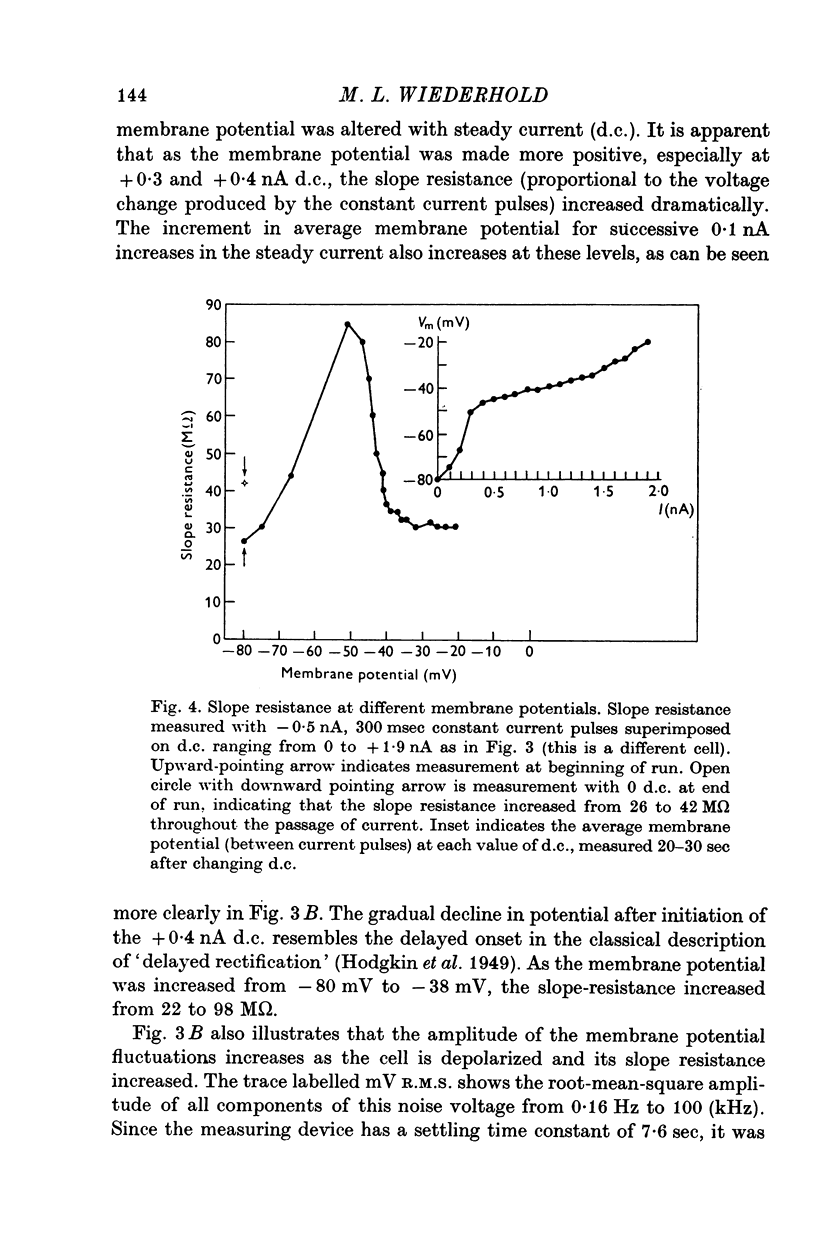
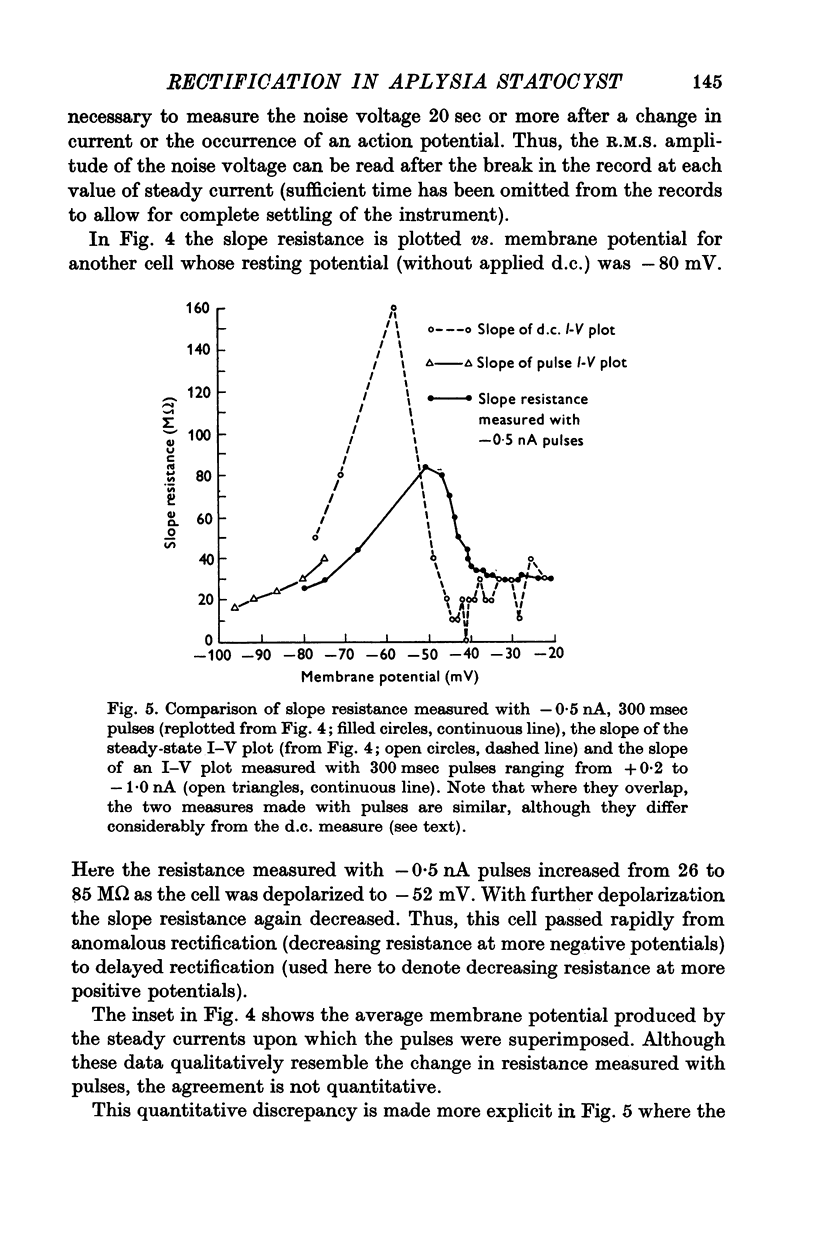
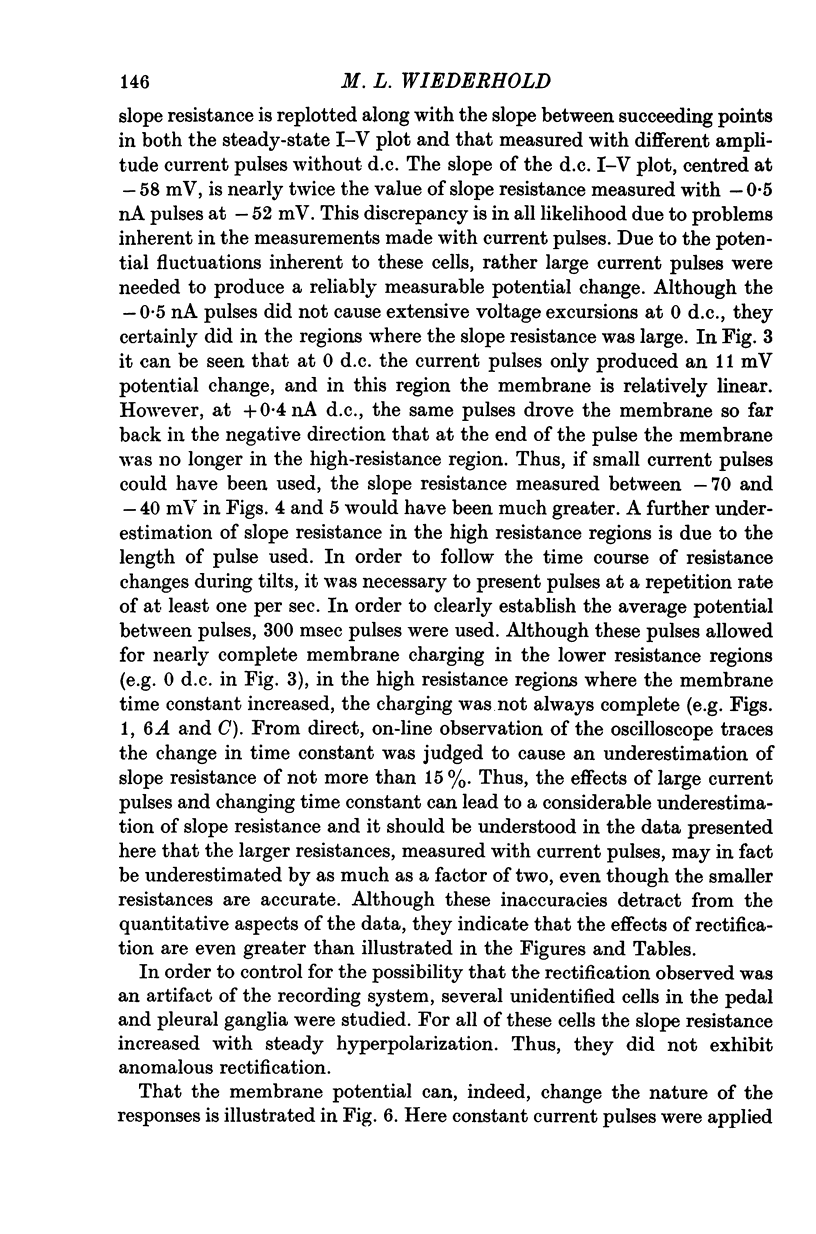
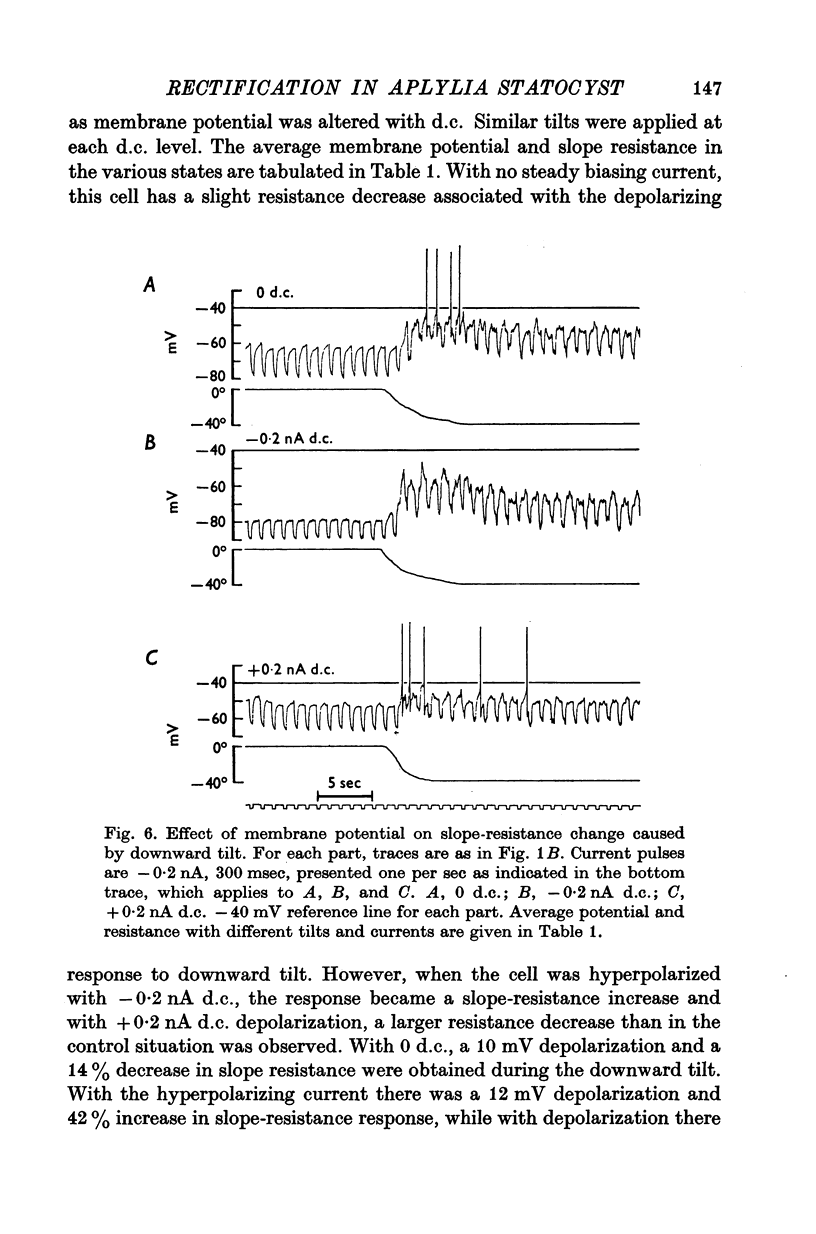
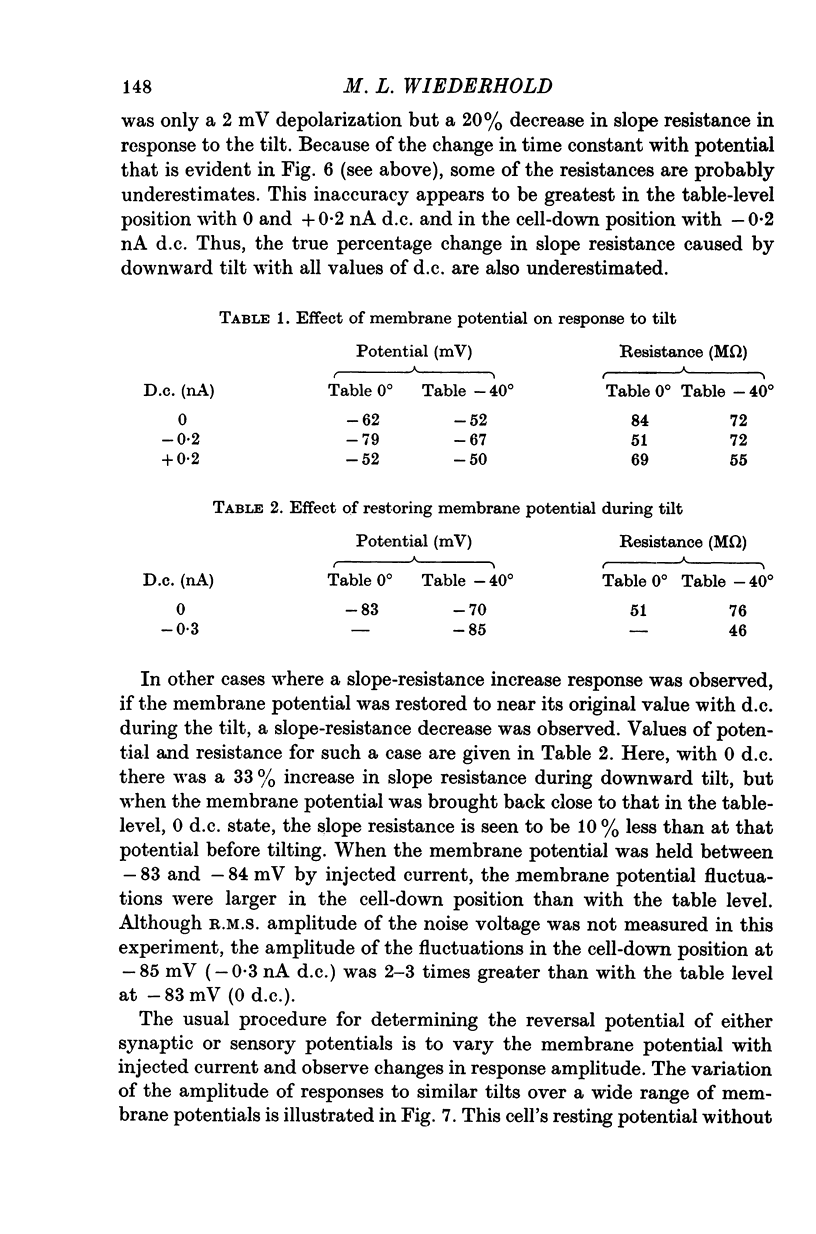

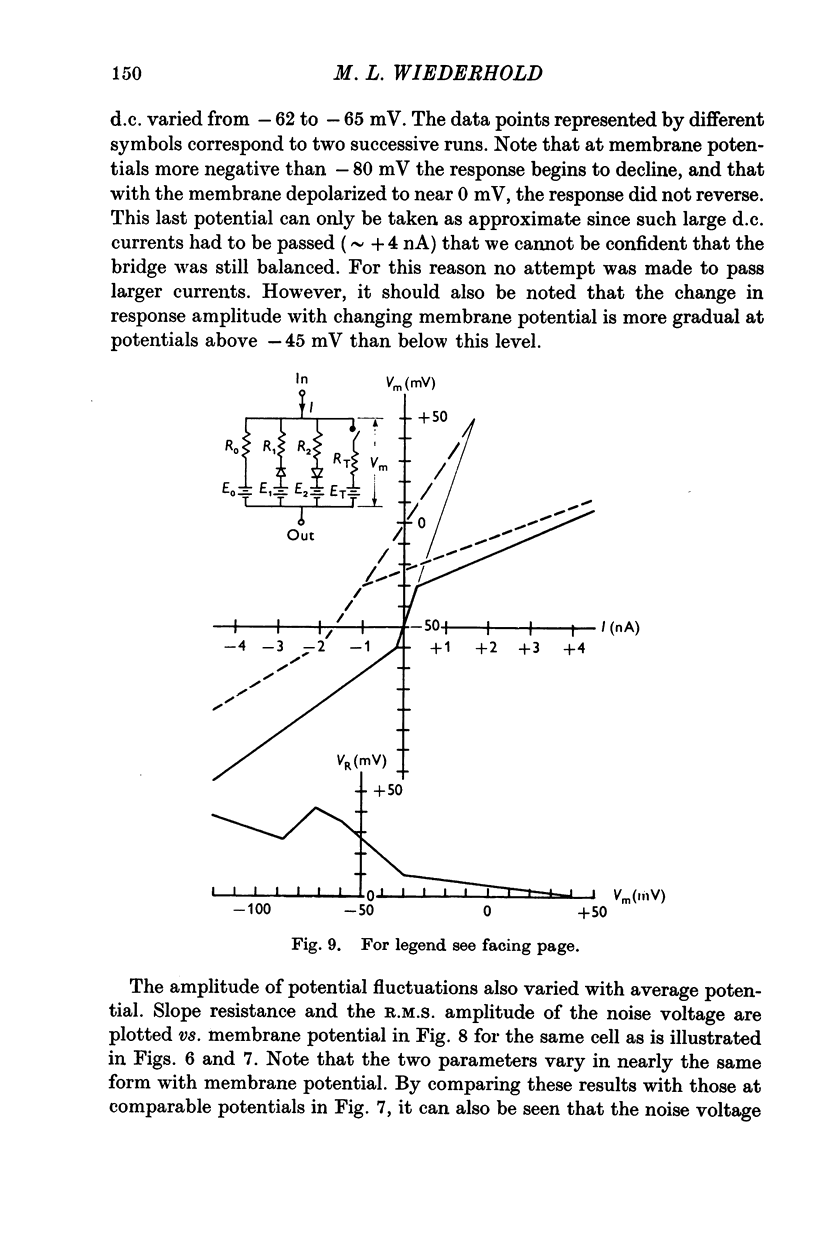
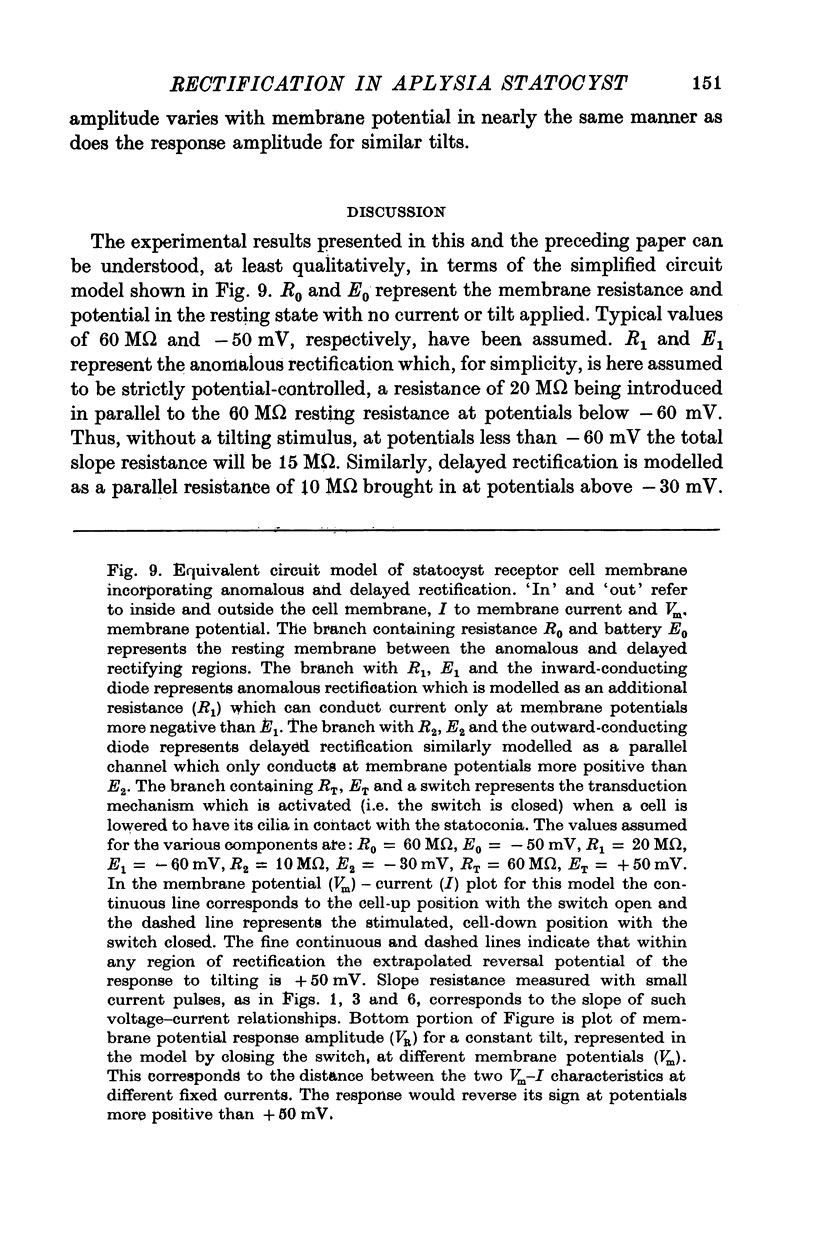
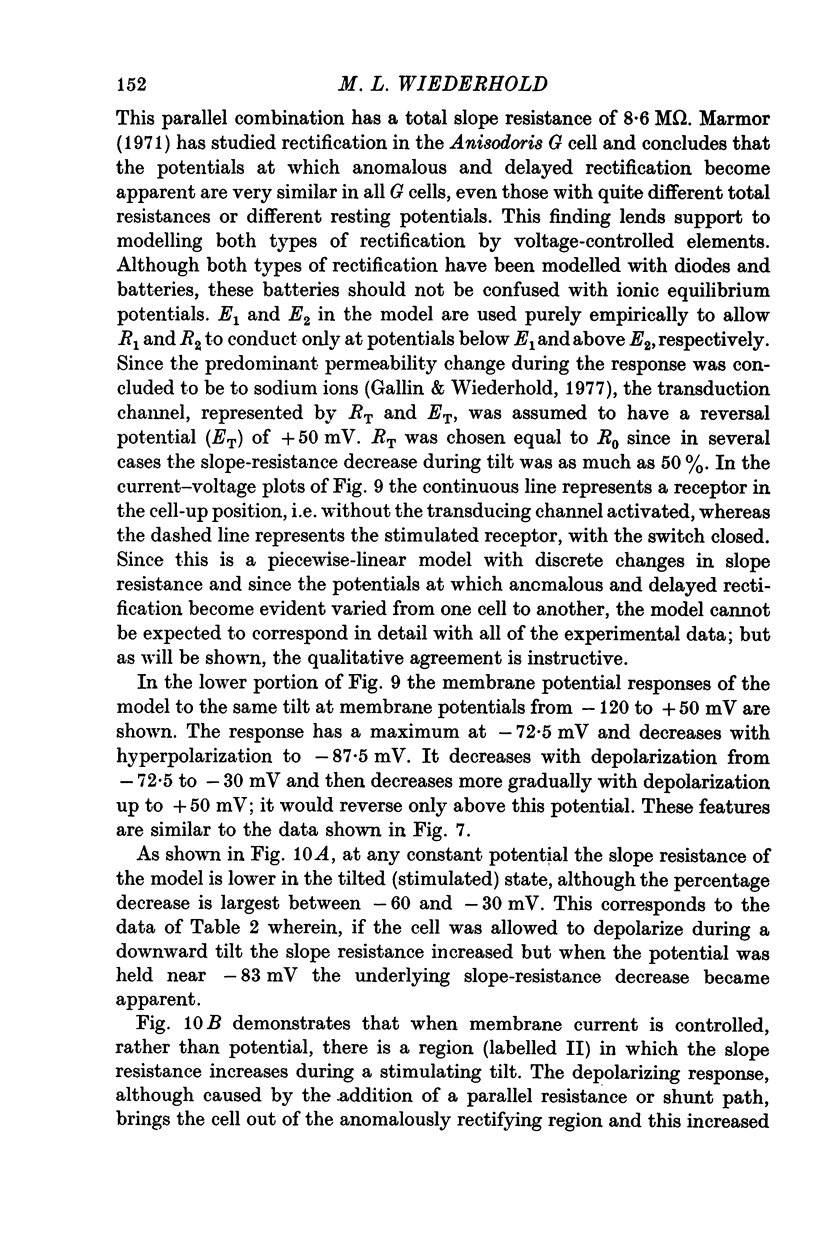
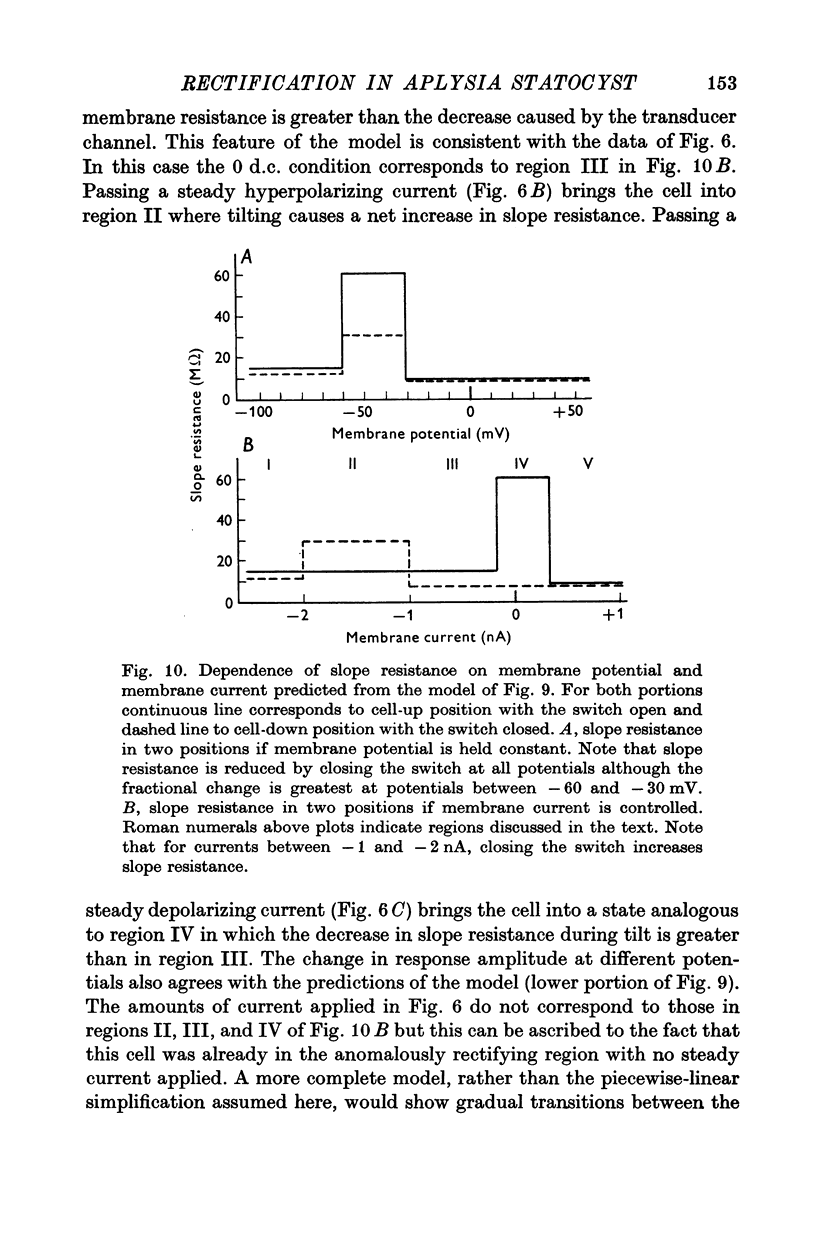

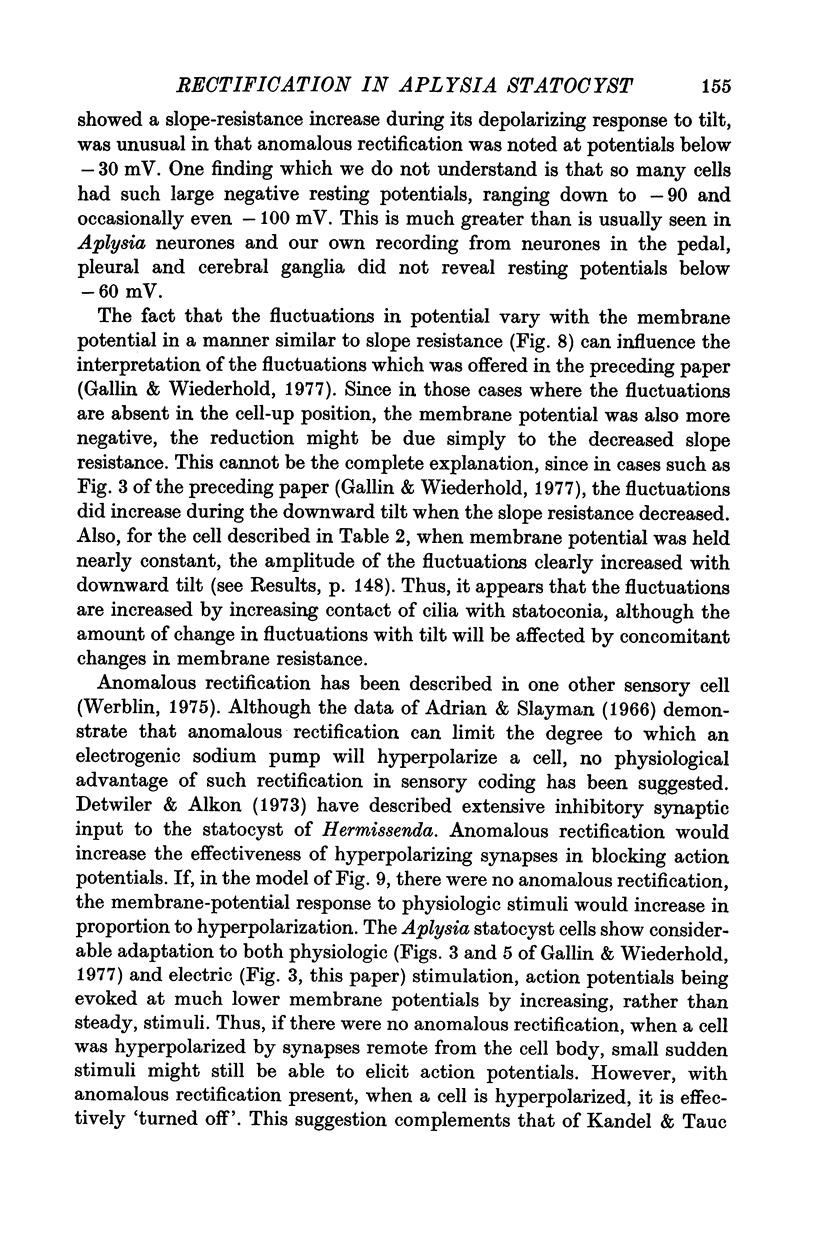
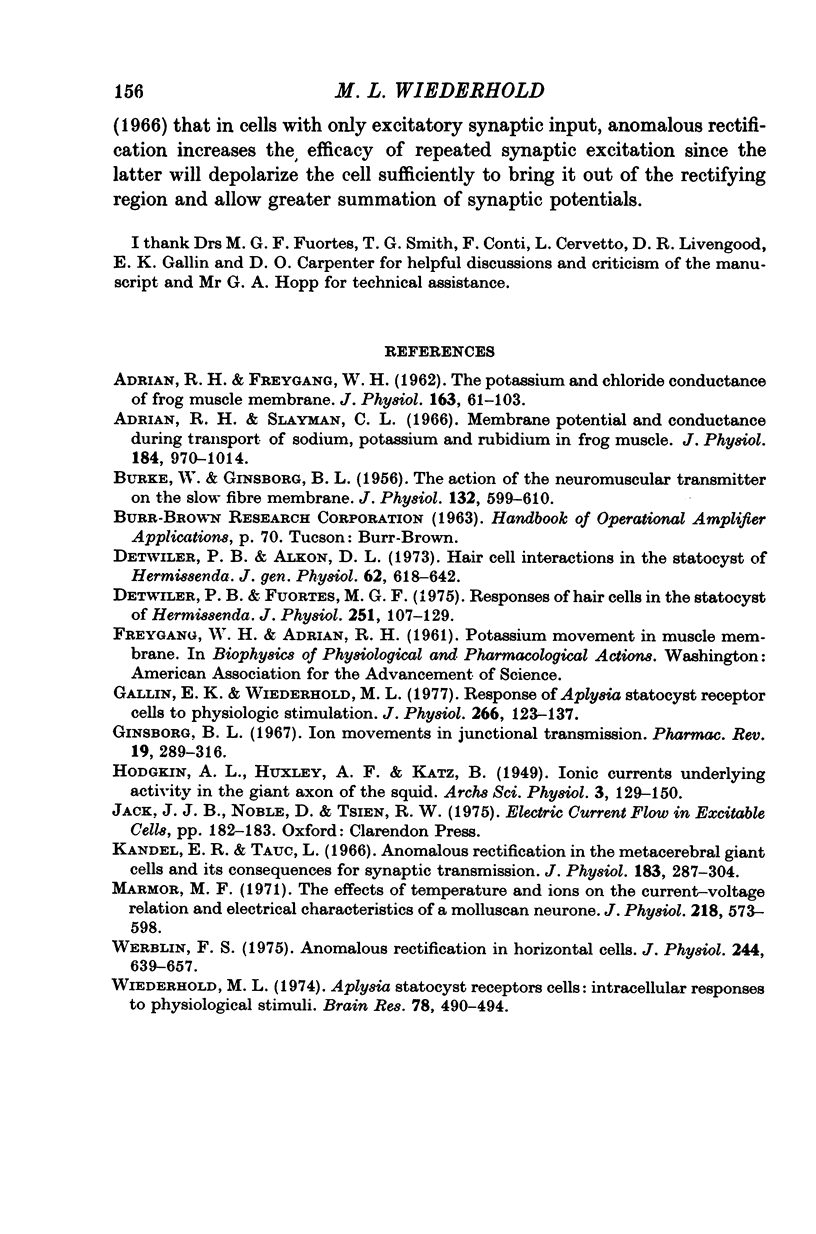
Selected References
These references are in PubMed. This may not be the complete list of references from this article.
- Adrian R. H., Freygang W. H. The potassium and chloride conductance of frog muscle membrane. J Physiol. 1962 Aug;163(1):61–103. doi: 10.1113/jphysiol.1962.sp006959. [DOI] [PMC free article] [PubMed] [Google Scholar]
- Adrian R. H., Slayman C. L. Membrane potential and conductance during transport of sodium, potassium and rubidium in frog muscle. J Physiol. 1966 Jun;184(4):970–1014. doi: 10.1113/jphysiol.1966.sp007961. [DOI] [PMC free article] [PubMed] [Google Scholar]
- BURKE W., GINSBORG B. L. The action of the neuromuscular transmitter on the slow fibre membrane. J Physiol. 1956 Jun 28;132(3):599–610. doi: 10.1113/jphysiol.1956.sp005552. [DOI] [PMC free article] [PubMed] [Google Scholar]
- Detwiler P. B., Alkon D. L. Hair cell interactions in the statocyst of Hermissenda. J Gen Physiol. 1973 Nov;62(5):618–642. doi: 10.1085/jgp.62.5.618. [DOI] [PMC free article] [PubMed] [Google Scholar]
- Detwiler P. B., Fuortes M. G. Responses of hair cells in the statocyst of Hermissenda. J Physiol. 1975 Sep;251(1):107–129. doi: 10.1113/jphysiol.1975.sp011083. [DOI] [PMC free article] [PubMed] [Google Scholar]
- Gallin E. K., Wiederhold M. L. Response of Aplysia statocyst receptor cells to physiologic stimulation. J Physiol. 1977 Mar;266(1):123–137. doi: 10.1113/jphysiol.1977.sp011759. [DOI] [PMC free article] [PubMed] [Google Scholar]
- Ginsborg B. L. Ion movements in junctional transmission. Pharmacol Rev. 1967 Sep;19(3):289–316. [PubMed] [Google Scholar]
- Kandel E. R., Tauc L. Anomalous rectification in the metacerebral giant cells and its consequences for synaptic transmission. J Physiol. 1966 Mar;183(2):287–304. doi: 10.1113/jphysiol.1966.sp007867. [DOI] [PMC free article] [PubMed] [Google Scholar]
- Marmor M. F. The effects of temperature and ions on the current-voltage relation and electrical characteristics of a molluscan neurone. J Physiol. 1971 Nov;218(3):573–598. doi: 10.1113/jphysiol.1971.sp009634. [DOI] [PMC free article] [PubMed] [Google Scholar]
- Werblin F. S. Anomalous rectification in horizontal cells. J Physiol. 1975 Jan;244(3):639–657. doi: 10.1113/jphysiol.1975.sp010817. [DOI] [PMC free article] [PubMed] [Google Scholar]
- Wiederhold M. L. Aplysia statocyst receptor cells: intracellular responses to physiological stimuli. Brain Res. 1974 Oct 4;78(3):490–494. doi: 10.1016/0006-8993(74)90931-7. [DOI] [PubMed] [Google Scholar]


